Inside The New York Botanical Garden
William and Lynda Steere Herbarium
Posted in Programs and Events on June 18 2014, by Lansing Moore
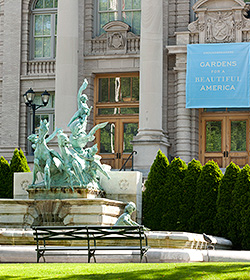 This Friday, June 20, the Garden will host the inaugural symposium of the new Humanities Institute within the LuEsther T. Mertz Library! This exciting new initiative will further establish the academic role of the world’s largest, most comprehensive botanical and horticultural library.
This Friday, June 20, the Garden will host the inaugural symposium of the new Humanities Institute within the LuEsther T. Mertz Library! This exciting new initiative will further establish the academic role of the world’s largest, most comprehensive botanical and horticultural library.
In keeping with the spirit of Groundbreakers: Great American Gardens and The Women Who Designed Them, Friday will honor the role of women in the historic development of today’s urban spaces with a panel of visiting experts. These various speakers will be led by landscape historian Thaisa Way, ASLA, in a conversation entitled Women and the City—From a Landscape Perspective. Read on for the full lineup and more information about the new Humanities Institute!
Read More
Posted in Programs and Events on May 22 2014, by Lansing Moore
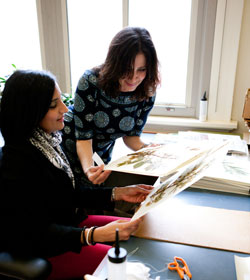 Gardening is both an art and a science. While our new Groundbreakers exhibition examines the art of landscape architecture and ornamental plantings, next week’s Annual Science Open House will dive headfirst into the cutting-edge research and history of innovation that distinguishes NYBG. It’s amazing to witness the variety of work that goes on at the Garden, much of which goes unseen by visitors who come to admire the serene landscape. Join expert tour guides next week on an exclusive peek behind the scenes of the real “groundbreaking” work that goes on right here in New York.
Gardening is both an art and a science. While our new Groundbreakers exhibition examines the art of landscape architecture and ornamental plantings, next week’s Annual Science Open House will dive headfirst into the cutting-edge research and history of innovation that distinguishes NYBG. It’s amazing to witness the variety of work that goes on at the Garden, much of which goes unseen by visitors who come to admire the serene landscape. Join expert tour guides next week on an exclusive peek behind the scenes of the real “groundbreaking” work that goes on right here in New York.
The Open House kicks off next Thursday, May 29, with our not-to-be-missed evening hosted by bestselling authors Elizabeth Gilbert and Amy Stewart. Click through for complete details on all four days of scientific exploration!
Read More
Posted in Programs and Events, Science on September 30 2011, by Ann Rafalko
Saturday and Sunday, November 12-13, 2011
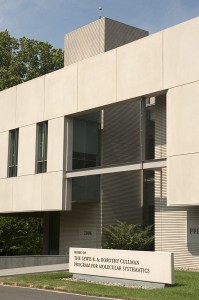
Our last attempt at hosting this “inside look” at The New York Botanical Garden‘s Science campus was rained out by a certain tropical storm (we’re looking at you Irene), so we’re trying again. And this time we’re making it even bigger and better than before!
The Science Open House weekend will be held in conjunction with the second Thain Family Forest Dedication festival weekend, which means there will be a ton of fun activities for the whole family! Start inside with a look at the beautiful Pfizer Plant Research Laboratory, then explore the fascinating William and Lynda Steere Herbarium, and finally, listen to Garden scientists talk about their forest-based research. Then head outside and enjoy the beauties of fall in the Garden’s historic, 50-acre Thain Family Forest: take an expert-led nature walk, canoe down the Bronx River and learn about its wildlife, climb a tree with an arborist, and so much more. The Garden is never the same two days in a row, so come spend a day in one of the world’s greatest urban gardens, The New York Botanical Garden!
Head below the jump to see the schedule for this exciting weekend of science events!
Posted in Programs and Events, Science on August 22 2011, by Ann Rafalko
 Saturday and Sunday, August 27-28, 2011
Saturday and Sunday, August 27-28, 2011
This weekend-long event will offer the public a rare insider’s view of The New York Botanical Garden’s Science campus.
Garden scientists will lead tours of the Pfizer Plant Research Laboratory and William and Lynda Steere Herbarium.
Briefings from the Field, a short lecture series featuring updates from the fieldwork of various Garden scientists, is open to the public Saturday at 2 p.m. in the Arthur and Janet Ross Lecture Hall
Garden scientists are working all over the world on plant-related studies ranging from working to preserve the endangered flora of Puerto Rico, to searching for lichens and mosses at the ends of the earth, to hunting for hidden pathogens in North America’s cranberry bogs, and to empowering junior high school girls through flowers. Come visit these beautiful and fascinating facilities (get a preview of the Pfizer Lab here) and hear the stories of discovery from the Garden’s scientists themselves.
Head below the jump to see the schedule for this exciting weekend of science events!
Posted in Science on December 15 2009, by Plant Talk
Part 2 in a 3-part series
Read Part 1
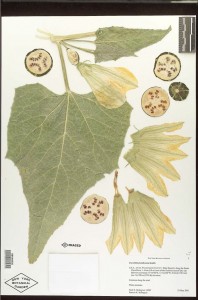 Worldwide trends notwithstanding, the chief concern of our William and Lynda Steere Herbarium management team on a daily basis is not the decline in the use of natural history collections, as reported in a New York Times article this summer, but rather how to keep up with the needs of all our users.
Worldwide trends notwithstanding, the chief concern of our William and Lynda Steere Herbarium management team on a daily basis is not the decline in the use of natural history collections, as reported in a New York Times article this summer, but rather how to keep up with the needs of all our users.
Scientists use the Steere Herbarium to answer the most critical questions about plant diversity, namely: How many species are there? How are they related to one another? What environmental factors control their growth? Given that plants supply most of the food, fuel, shelter, and medicines for the earth’s population, predicting how these organisms may respond to climate change is one of the most pressing questions for scientists today.
Visitors are sometimes surprised that most of the scientists who use to the Herbarium are still doing the fundamental work of documenting the Earth’s biodiversity. “Don’t we know all the species yet?” some have asked. The answer is “No, not by a long shot.” Estimates are that we know only about 75 percent of the world’s plant species and less than 10 percent of the species of the fungi, the two major groups of organisms represented in the Herbarium collections.
Read More
Posted in Science on December 1 2009, by Plant Talk
 |
Barbara Thiers, Ph.D., is Director of the William and Lynda Steere Herbarium and oversees the C.V. Starr Virtual Herbarium. |
Part 1 in a 3-part series
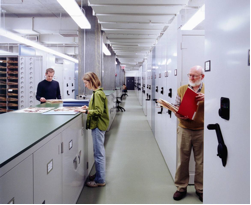 The 7.3 million collections of the William and Lynda Steere Herbarium, the largest in the Western Hemisphere and among the four largest in the world, form the core of a beehive of activity. On a typical work day during the past year, our Herbarium staff of 29 full-time equivalents answered 28 requests for information via e-mail or phone, helped 10 visiting researchers use the Herbarium, sent 214 specimens on loan (over the year we sent to 38 countries and 38 states of the United States), added 360 new specimens, and digitized 400 specimens for sharing on-line through the C.V. Starr Virtual Herbarium.
The 7.3 million collections of the William and Lynda Steere Herbarium, the largest in the Western Hemisphere and among the four largest in the world, form the core of a beehive of activity. On a typical work day during the past year, our Herbarium staff of 29 full-time equivalents answered 28 requests for information via e-mail or phone, helped 10 visiting researchers use the Herbarium, sent 214 specimens on loan (over the year we sent to 38 countries and 38 states of the United States), added 360 new specimens, and digitized 400 specimens for sharing on-line through the C.V. Starr Virtual Herbarium.
Each herbarium specimen is a primary source of historical information about the Earth’s vegetation as well as about the person who collected it. The label that accompanies each specimen gives not only the name of the plant, but where and when it was collected, and by whom. Some labels give far more information, such as the name of the expedition, the funding source, and names of other members of the collecting party. Historical specimens often bear original handwriting, and sometimes notes, correspondence or sketches.
Read More
 This Friday, June 20, the Garden will host the inaugural symposium of the new Humanities Institute within the LuEsther T. Mertz Library! This exciting new initiative will further establish the academic role of the world’s largest, most comprehensive botanical and horticultural library.
This Friday, June 20, the Garden will host the inaugural symposium of the new Humanities Institute within the LuEsther T. Mertz Library! This exciting new initiative will further establish the academic role of the world’s largest, most comprehensive botanical and horticultural library.




